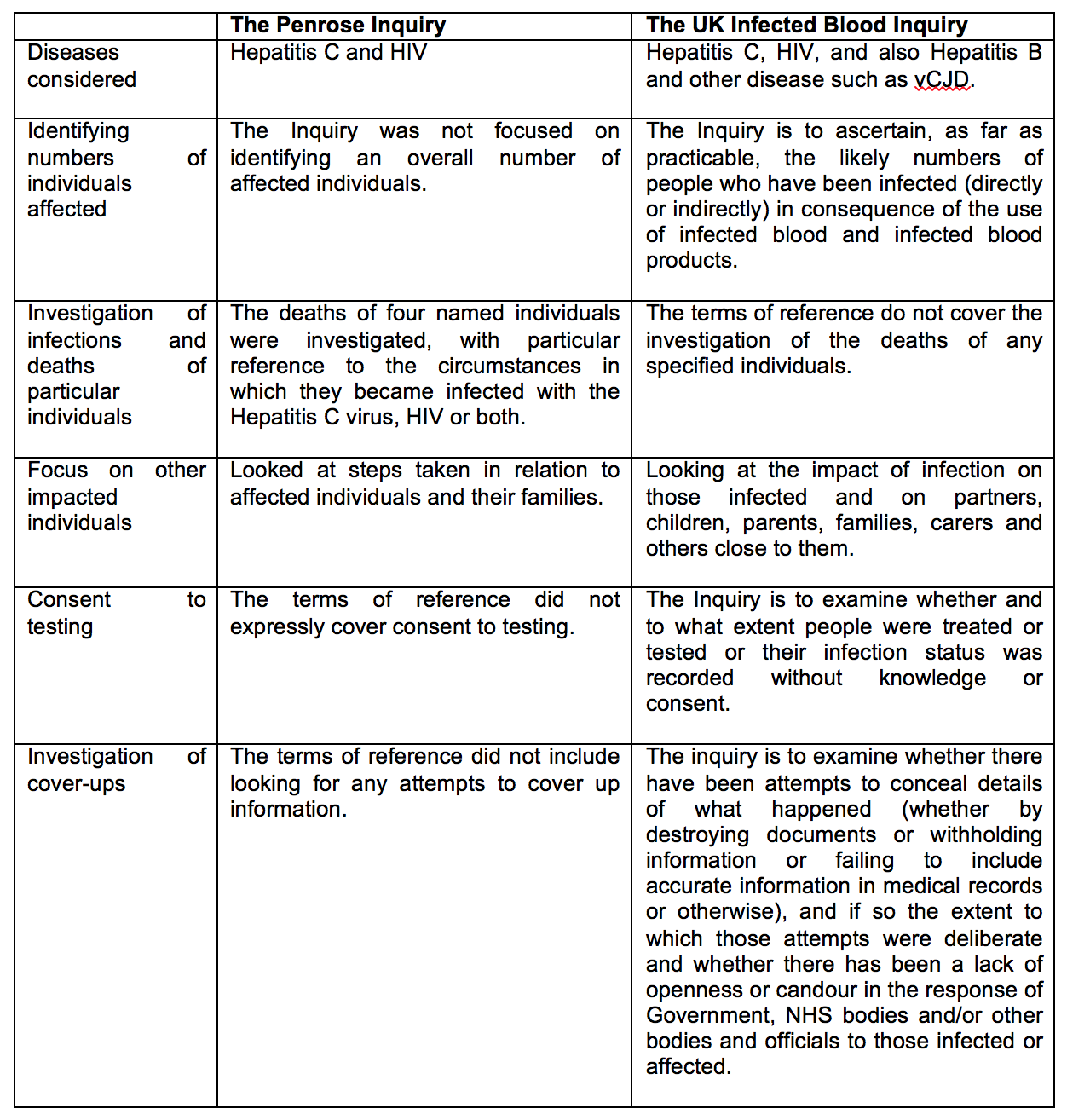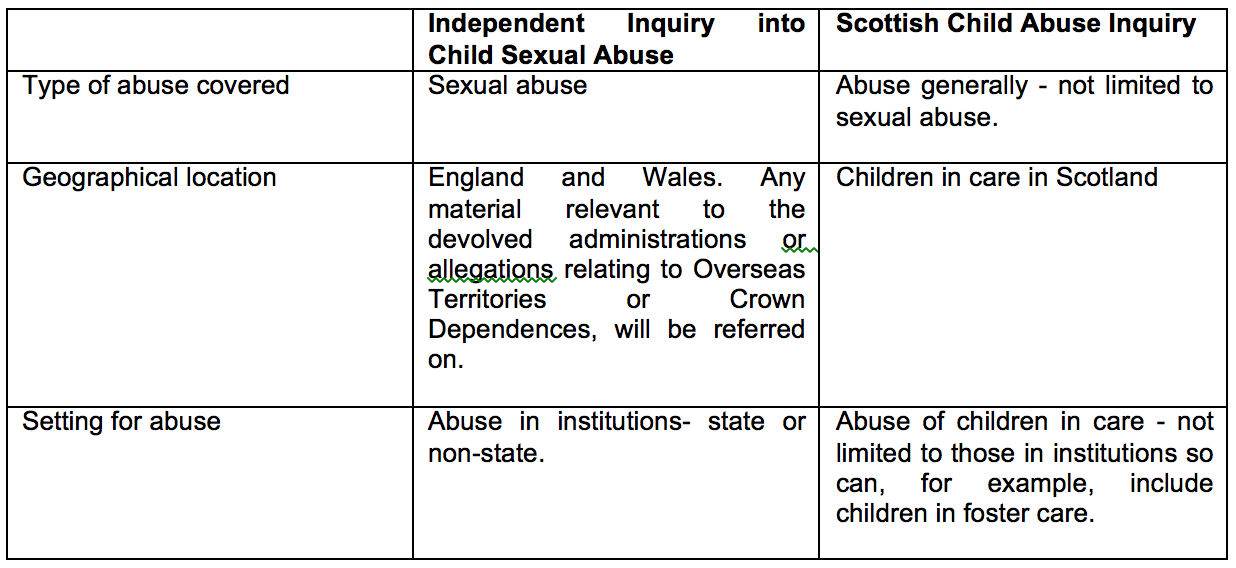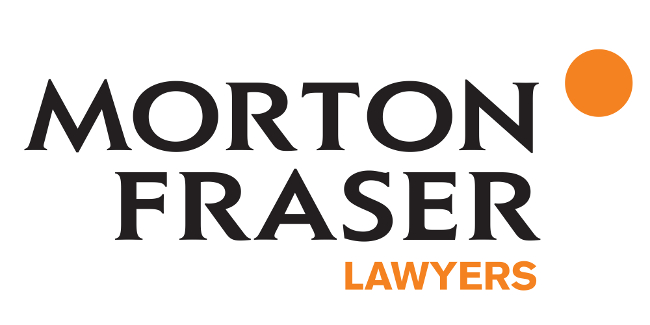Jenny Dickson: The different scope of statutory inquiries across the UK

Jenny Dickson
In recent times, we have seen an increase in the number and scope of public inquiries. A day doesn’t go by when the headlines don’t include reference to one of the current inquiries: Grenfell, Infected Blood, Child Abuse. In 2020, we represented clients at a number of high profile public inquiries. One thing which the prevalence of inquiries highlights is the importance of taking into account the potential that your client may require to respond to more than one inquiry, covering similar subject matter. This is most likely when your client has operations throughout the UK and may be involved in inquiries in different jurisdictions.
Statutory inquiries are governed by the Inquiries Act 2005. They can be set up by the UK government or by the governments of the devolved nations, to investigate events which have or could cause public concern. Although different rules apply within the different UK jurisdictions, the substance of the Scottish rules is very similar to those applicable to inquiries in England and Wales. Despite the similarity of the rules, it would be a mistake to conclude that inquiries are similar in the different jurisdictions within the UK.
In this article we look at two examples where statutory inquiries have been set up by both the UK and Scottish Governments to investigate very similar issues: inquiries looking at the impact of infected blood and infected blood products, and inquiries into child abuse.
Infected blood inquiries
A Scottish public inquiry was announced on 23 April 2008 by Nicola Sturgeon who, at that time, was the Cabinet Secretary for Health and Wellbeing. Lord Penrose was appointed as the Chair and therefore the inquiry is known as The Penrose Inquiry. It delivered its final report on 25 March 2015. The Penrose Inquiry’s website describes it as:
“the Scottish Public Inquiry into Hepatitis C/HIV acquired infection from NHS treatment in Scotland with blood and blood products was set up by the Scottish Ministers”
Subsequent to this, the Infected Blood Inquiry was set up by the UK Government. It was announced on 11 July 2017 and Sir Brian Langstaff was later announced as its chair.
The website for the inquiry describes it as:
“an independent public statutory Inquiry… to establish the circumstances in which men, women and children treated by the National Health Service in the United Kingdom were given infected blood and infected blood products, in particular since 1970”
From looking at the descriptions on each inquiry’s website they both look similar. The inquiries are both looking at infections arising from treatment by the NHS with infected blood and blood products. The Penrose Inquiry had a focus on treatment within Scotland whereas the Infected Blood Inquiry was looking at treatment throughout the UK. Questions might, indeed, be asked as to why the latter also needed to look at Scotland as surely this would be going over the same ground?
A deeper delve into the scope of each inquiry, as set out in their respective terms of reference, makes clear that there are a number of differences arising which mean the matters reviewed might vary to a degree which would, at first glance, be surprising. Some of the key difference in scope between the two inquiries are:

Child abuse inquiries
The second example we consider are the statutory inquiries into child abuse which have been set up for both England and Wales, and Scotland. A third, and separate, inquiry covers Norther Ireland.
The UK Government set up the Independent Inquiry into Child Sexual Abuse to determine whether state and non-state institutions have taken seriously their duty of care to protect children from sexual abuse within England and Wales. The Inquiry is chaired by Professor Alexis Jay OBE. Its purpose, from its terms of reference, is said to be:
“To consider the extent to which State and non-State institutions have failed in their duty of care to protect children from sexual abuse and exploitation; to consider the extent to which those failings have since been addressed; to identify further action needed to address any failings identified; to consider the steps which it is necessary for State and non-State institutions to take in order to protect children from such abuse in future”
The Scottish Child Abuse Inquiry was set up in October 2015, and is now chaired by Lady Smith. Its website describes it as: “Investigating the abuse of children in care in Scotland” and its overall aim and purpose is said to be:
“to raise public awareness of the abuse of children in case, particularly during the period covered by the Inquiry”
At first glance again both inquires appear to have a similar focus of looking at abuse of children who were in the care of the state. A close look at their terms of reference again reveals some differences in scope:

Why are the differences in the scope of inquiries significant?
These examples show that just because an inquiry is taking place within one UK jurisdiction at one time, it does not mean that a similar inquiry could not subsequently start in another UK jurisdiction at a later date. Any later inquiry could have a different scope.
Consistency of approach is important, as is keeping records of all information available and produced to any inquiry in case it is also relevant to a subsequent inquiry. When representing clients in inquiries, even if the Terms of Reference specifically exclude other jurisdictions within the UK, a prudent lawyer would have one eye on that jurisdiction, mindful that their clients may require to respond to a similar inquiry there at a later date.

Jenny Dickson is a partner and solicitor advocate at Morton Fraser. This article formed part of the firm’s Litigation in Scotland Report 2021.








